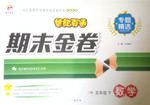题目内容
【题目】 Scientists have come up with a new way to measure ocean trash(垃圾) and the numbers are even worse than thought. In 2010, eight million tons of plastic trash ended up in the ocean from coastal countries far more than the trash floating on the surface of the ocean. That ' s bad news. The even worse news is that the tonnage may increase by as much as ten times in the next decade unless the world finds a better way to improve how trash is collected and managed.
The new study identifies the major sources of plastic trash and names the top 20 countries producing the greatest amount of ocean trash. The United States is 20th. The rest of the list includes l1 Asian countries, Turkey, five African countries, and Brazil.
The size of the difference is huge --- 20 to 2,000 times more than the amount of floating trash. To make the figure eight million tons understandable, Jenna Jambeck, who led the study, compares it to lining up five grocery bags of trash on every foot of coastline around the globe. "And by 2025, those five grocery bags of plastic are going to be ten bags," she says. That would be 155 million tons a year if present trash management practices remain the same."
Ocean plastic has turned up everywhere. It has been found in the deep sea and buried in Arctic ice with terrible consequences for some 700 species of wildlife in the ocean.
The study has also created a new mystery. Because what flows into the ocean is so large, scientists now have to figure out where else it collects and in what amounts. "But what we need to do now is close the gap." says Richard Thompson, a scientist from the U.K.
【1】What is the most serious problem concerning ocean trash?
A.There is no way to get rid of it,.
B.Eight million tons of trash goes into the ocean.
C.A lot more trash may be put into the ocean in the future.
D.The way to measure ocean trash hasn 't been found.
【2】Jenna Jambeck explains the seriousness of ocean trash mainly by ______.
A.showing the causesB.describing a process
C.making comparisonsD.making a classification
【3】The underlined part “the gap” in the last paragraph refers to the difference between ______.
A.what is harmless and what is dangerous
B.what is on the surface and what is in the deep sea
C.what is found and what can be recycled
D.what is from America and what is from other countries
【4】Which of the following can best describe the author 's tone in writing the text?
A.Doubtful.B.Hopeless.C.Critical.D.Concerned.
【答案】
【1】C
【2】C
【3】B
【4】D
【解析】
这是一篇说明文。文章介绍了科学家们想出了一种测量海洋垃圾的新方法,测试结果比想象的还要糟糕。科学家们通过研究发现了塑料垃圾的主要来源,并且科学家们现在必须弄清楚塑料垃圾还能从哪里收集,收集多少。
【1】细节理解题。根据第一段The even worse news is that the tonnage may increase by as much as ten times in the next decade unless the world finds a better way to improve how trash is collected and managed. 更糟糕的消息是,除非世界找到更好的方法来改善垃圾的收集和管理,否则在未来十年里,垃圾的吨数可能会增加十倍之多。可知最令人担忧的问题是将来垃圾的数量还可能会增加。故选C项。
【2】推理判断题。根据第三段To make the figure eight million tons understandable, Jenna Jambeck, who led the study, compares it to lining up five grocery bags of trash on every foot of coastline around the globe. 为了让八百万吨这个数字更容易理解,这项研究的负责人Jenna Jambeck把它比作在全球每一英尺的海岸线上排列五个食品袋的垃圾。可知,Jenna Jambeck是通过作对比的方法来说明垃圾数量的严重性。故选C项。
【3】词义猜测题。根据最后一段Because what flows into the ocean is so large, scientists now have to figure out where else it collects and in what amounts. 因为流入海洋的水是如此之大,科学家们现在必须弄清楚它还能从哪里收集,收集多少。可知,这里“哪里”包括海洋表面和海底,所以“the gap”指的就是“海洋表面和海底”垃圾数量的差异。故选B项。
【4】推理判断题。考查作者的态度,根据全文作者描述的数据以及尤其是两位科学家说的话,说明了作者对于海洋垃圾增加还是非常关心的。故选D项。

 世纪百通期末金卷系列答案
世纪百通期末金卷系列答案